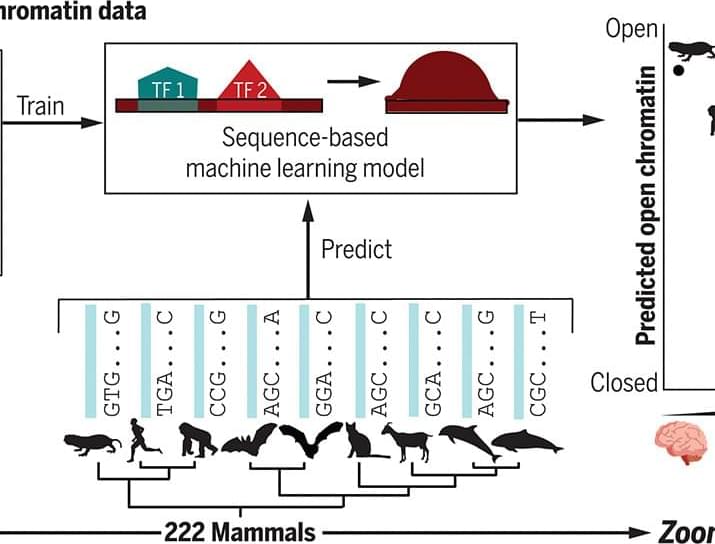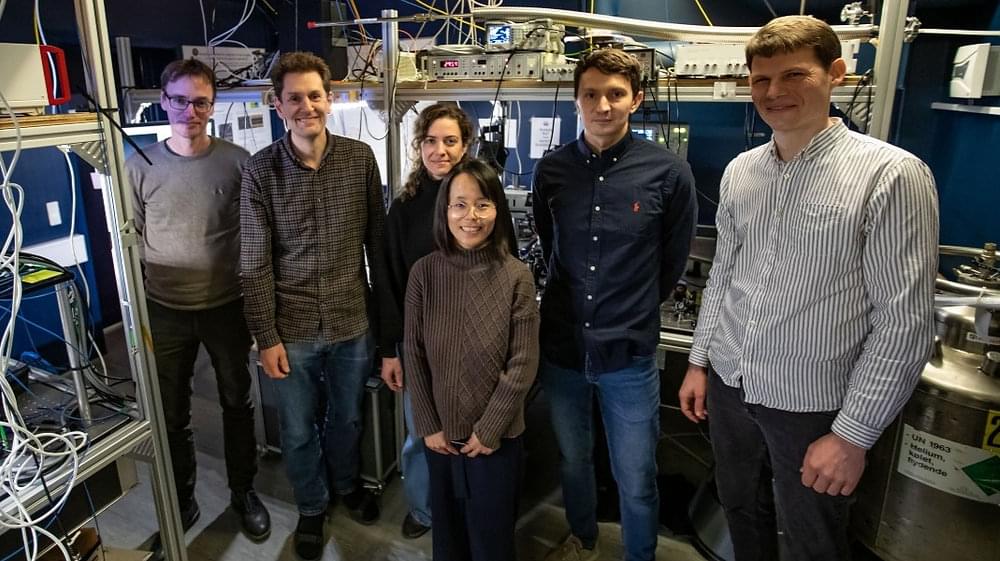ChatGPT may get an incredible boost with applications like Auto-GPT, which aims to give autonomy to the chatbot.



Physicists believe most of the matter in the Universe is made up of an invisible substance that we only know about by its indirect effects on the stars and galaxies we can see.
We’re not crazy! Without this “dark matter”, the Universe as we see it would make no sense.
But the nature of dark matter is a longstanding puzzle. However, a new study by Alfred Amruth at the University of Hong Kong and colleagues, published in Nature Astronomy, uses the gravitational bending of light to bring us a step closer to understanding.

Protein-coding sequence differences have failed to fully explain the evolution of multiple mammalian phenotypes. This suggests that these phenotypes have evolved at least in part through changes in gene expression, meaning that their differences across species may be caused by differences in genome sequence at enhancer regions that control gene expression in specific tissues and cell types. Yet the enhancers involved in phenotype evolution are largely unknown. Sequence conservation–based approaches for identifying such enhancers are limited because enhancer activity can be conserved even when the individual nucleotides within the sequence are poorly conserved. This is due to an overwhelming number of cases where nucleotides turn over at a high rate, but a similar combination of transcription factor binding sites and other sequence features can be maintained across millions of years of evolution, allowing the function of the enhancer to be conserved in a particular cell type or tissue. Experimentally measuring the function of orthologous enhancers across dozens of species is currently infeasible, but new machine learning methods make it possible to make reliable sequence-based predictions of enhancer function across species in specific tissues and cell types.

In a new breakthrough, researchers at the University of Copenhagen, in collaboration with Ruhr University Bochum, have solved a problem that has caused quantum researchers headaches for years. The researchers can now control two quantum light sources rather than one. Trivial as it may seem to those uninitiated in quantum, this colossal breakthrough allows researchers to create a phenomenon known as quantum mechanical entanglement. This in turn, opens new doors for companies and others to exploit the technology commercially.

How much of the multiverse is TRUE?? Join us… and find out!
Subscribe: https://wmojo.com/unveiled-subscribe.
In this video, Unveiled takes a closer look at the multiverse, as it’s represented in both science FICTION and science FACT! How much of the theory is true? How much of it is POSSIBLY true? And how much of it has been totally made up for books, film and TV??
This is Unveiled, giving you incredible answers to extraordinary questions!
Find more amazing videos for your curiosity here:
6 Scientific Breakthroughs Predicted During Your Lifetime — https://youtu.be/wGKj-3AfxdE
Are We the Creation of a Type V Civilization? — https://youtu.be/T_u4lGDs3dM
0:00 Intro.
Read more about Disabled elephant bursts into tears as he walks for the first time in his life.

Neuromorphic computing approaches become increasingly important as we address future needs for efficiently processing massive amounts of data. The unique attributes of quantum materials can help address these needs by enabling new energy-efficient device concepts that implement neuromorphic ideas at the hardware level. In particular, strong correlations give rise to highly non-linear responses, such as conductive phase transitions that can be harnessed for short-and long-term plasticity. Similarly, magnetization dynamics are strongly non-linear and can be utilized for data classification. This Perspective discusses select examples of these approaches and provides an outlook on the current opportunities and challenges for assembling quantum-material-based devices for neuromorphic functionalities into larger emergent complex network systems.
In this episode, I discuss how our brain and body track time and the role that neurochemicals, in particular dopamine and serotonin, but also hormones such as melatonin, allow us to orient ourselves in time. I review the three types of time perception: of the past, of the present, and the future, and how dopamine and serotonin adjust both our perception of the speed of the passage of time and our memory of how long previous experiences lasted. I also discuss circannual entrainment, which is the process by which our brain and body are matched to the seasons, and circadian (24 hours) entrainment, both of which subconsciously adjust our perceived measurement of time. I explain the mechanisms of that subconscious control. And I cover the ultradian (90 minutes) rhythms that govern our ability to focus, including how to track when these 90-minute rhythms begin and end for the sake of work and productivity. I include ten tools based on the science of time perception that you can apply to enhance productivity, creativity, and relationships in various contexts.
Thank you to our sponsors:
ROKA — https://www.roka.com — code “huberman“
Athletic Greens — https://www.athleticgreens.com/huberman.
InsideTracker — https://www.insidetracker.com/huberman.
Our Patreon page:
https://www.patreon.com/andrewhuberman.
Supplements from Thorne:
http://www.thorne.com/u/huberman.
Social:
Instagram — https://www.instagram.com/hubermanlab.
Twitter — https://twitter.com/hubermanlab.
Facebook — https://www.facebook.com/hubermanlab.
Website — https://hubermanlab.com.
Newsletter — https://hubermanlab.com/neural-network.
Timestamps:

The Google employee who claimed last June his company’s A.I. model could already be sentient, and was later fired by the company, is still worried about the dangers of new A.I.-powered chatbots, even if he hasn’t tested them himself yet.
Blake Lemoine was let go from Google last summer for violating the company’s confidentiality policy after he published transcripts of several conversations he had with LaMDA, the company’s large language model he helped create that forms the artificial intelligence backbone of Google’s upcoming search engine assistant, the chatbot Bard.
Lemoine told the Washington Post at the time that LaMDA resembled “a 7-year-old, 8-year-old kid that happens to know physics” and said he believed the technology was sentient, while urging Google to take care of it as it would a “sweet kid who just wants to help the world be a better place for all of us.”